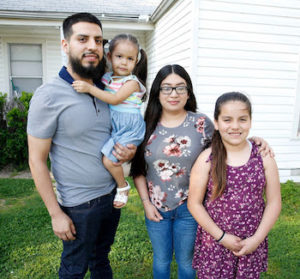
*The White Hispanic community is acknowledged on this date in 2000.
In the United States, individuals self-identify as white, of Hispanic descent, and/or speak Spanish natively. White Latino Americans are a broader category, including people of Brazilian and Argentine descent who predominantly speak Portuguese and Spanish.
Because white is a color, this self-identification appears to be an attempt to qualify for a societal category. Race and ethnicity are mutually independent based on the American definitions created by the Office of Management and Budget and the US Census Bureau. For the Census Bureau, ethnicity distinguishes between those who report ancestral origins in Spain or Latin America (Hispanic and Latino Americans) and those who do not (non-Hispanic Americans). "Mexican" was officially added as a racial category on the United States Census beginning in 1930 in connection with the growing Mexican population, but was removed in the following decades due to much of the Mexican population being repatriated back to Mexico, in addition to political pressure.
Before this, Latinos in the United States were often classified as "Mulattoes", "Indians," or "Other" if they were not purely of European ancestry. The classification was at the discretion of each census official before the establishment of a centralized Census Bureau in 1902. Non-Europeans in America have a history of legally attempting to be classified as white. Japanese American Takao Osawa filed a suit with the Supreme Court in 1922 and lost. The following year, Bhagat Singh Thind and East Indian Sikhs filed a similar case to be classified as white before the Supreme Court and lost. A designation for Hispanic and Latino citizens was returned in 1970, coinciding with increased immigration from Latin America. As had been the case historically, the classification of Latinos presented difficulties in the United States, for the country did not have a large mixed-race domestic population.
"Hispanic/Latino" will remain an ethnicity; many employers have already given "Hispanic or Latino" the same demographic weight as a racial group for some time. The US Census Bureau asks each resident to report the "race or races with which they most closely identify." White Americans are therefore categorized as either white Hispanics or non-Hispanic whites, the former comprising white Americans who identify as Hispanophone (e.g., Spain, Hispanic America, Equatorial Guinea), and the latter comprising white Americans who do not report Hispanophone ancestry. As of 2010, 50.5 million or 16.3% of Americans identified as Hispanic or Latino. Of those, 26.7 million self-identified as white, or 53% (8.64% of the US population).
A small minority of White Hispanics in the United States today is descended from the original Spanish colonists who settled the so-called "internal provinces" and Louisiana of New Spain. As the United States expanded westward, it annexed lands with a long-established population of Spanish-speaking settlers, who were overwhelmingly or exclusively of white Spanish ancestry (cf. White Mexican). This group became known as Hispanos. Before incorporation into the United States of America (and briefly, into Independent Texas), Hispanos had enjoyed a privileged status in the society of New Spain and later in post-colonial Mexico.
Concepts of multiracial identity have existed in Latin America since the "Middle Passage," originating in a Spanish caste system that apportioned different rights to people based on their degree of European, African, and Indigenous American ancestry. During the 20th century, the concept of mestizaje, or 'blending,' was adopted as a national identity by several Latin American countries to reduce racial conflict; this seems to have omitted the identifying term indigenous. A 2014 Pew Research Center survey found that one-third of US Hispanics identify as "mestizo," "mulatto", or another multiracial identity. Such identities often conflict with standard racial classifications in the US: among Hispanic American adults surveyed by Pew Research who identified as multiracial, about 40% reported their race as "white" on standard race question as used on the US Census; 13% reported belonging to more than one race or "mixed race"; while about 20% chose "Hispanic" as their race.
According to the 2010 United States Census, 50.5 million Americans (16.3%) identified as ethnically Hispanic or Latino. Of those, 53.0% (26.7 million) self-identified as racially white. The remaining respondents listed their races as some other race 36.7%, two or more races (multiracial) 6.0%, black or African American 2.5%, American Indian and Alaska Native 1.4%, Asian 0.4%, and Native Hawaiian or other Pacific Islander 0.1%. The "some other race" respondents are reclassified as white by the Census Bureau in its official race estimates. This means that more than 90% of all Hispanic or Latino Americans are counted as "white" in some US government statistics. Hispanics and Latinos who are native-born and immigrants identify as white in nearly identical percentages: 53.9 and 53.7, respectively, per figures from 2007. The overall Hispanic or Latino ratio was 53.8%.
In 2017, the Pew Research Center reported that high intermarriage rates and declining Latin American immigration have led to 11% of US adults with Hispanic ancestry (5.0 million people) no longer identifying as Hispanic. First-generation immigrants from Spain and Latin America identify as Hispanic at very high rates (97%), which reduces in each succeeding generation, second-generation (92%), third-generation (77%), and fourth-generation (50%). White Hispanics are widespread, with Florida and Texas being two states with some of the highest percentages of Hispanics self-identifying as white.